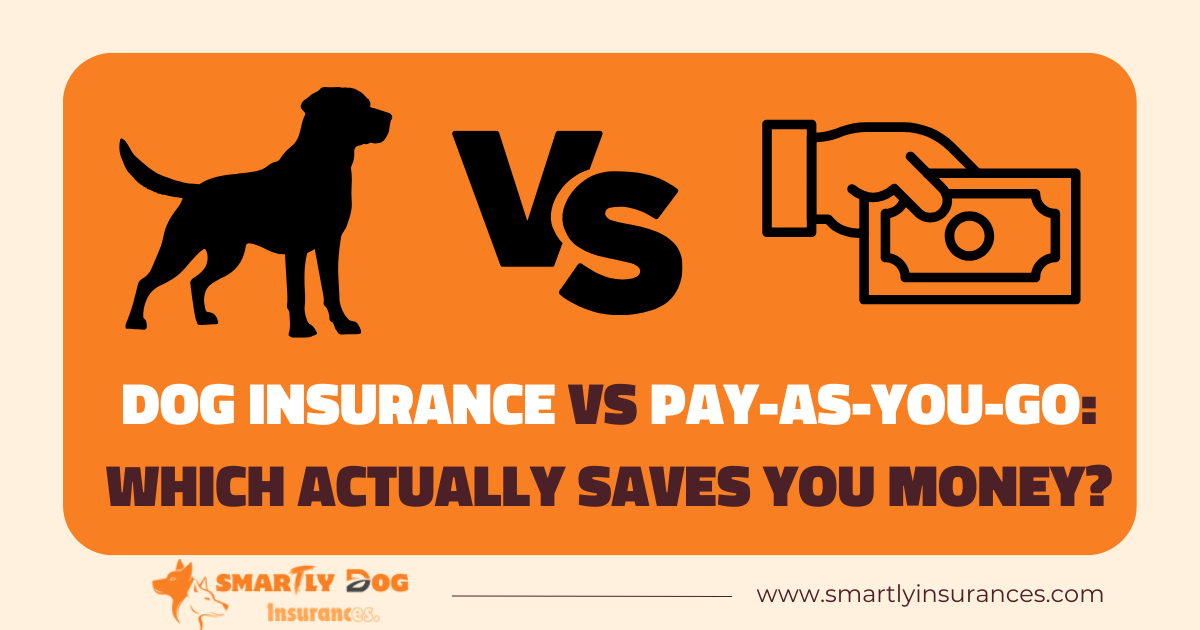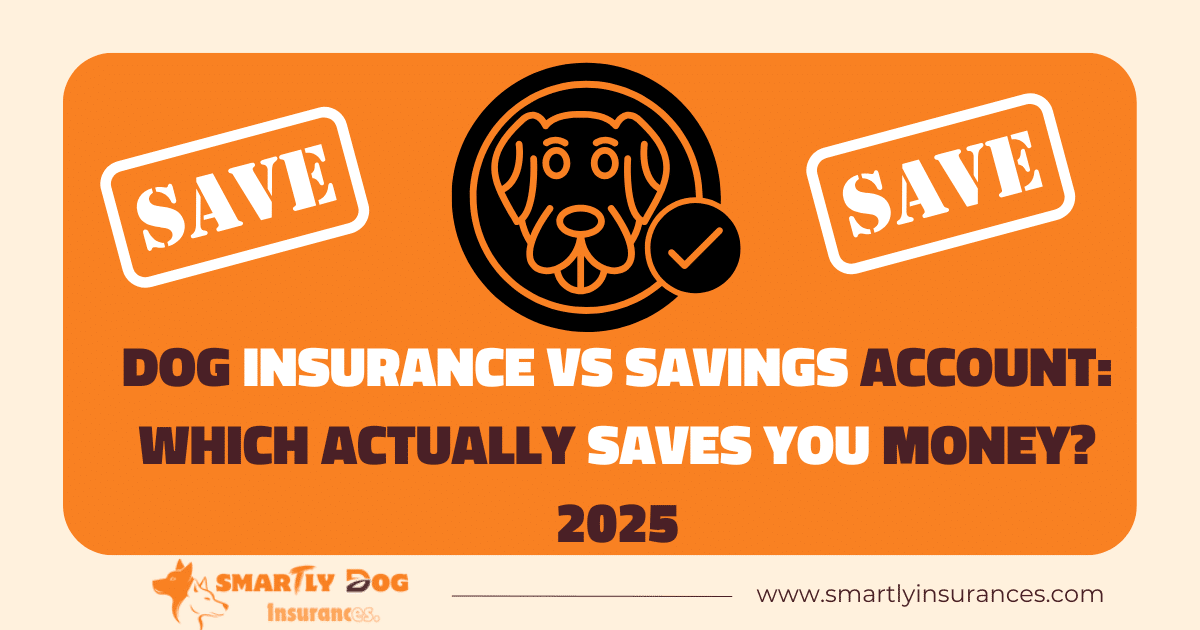The comparison between dog insurance and pay-as-you-go vet care reveals some unexpected statistics. The number of insured pets in the U.S. has doubled over the last several years. Over four million dogs and cats now have insurance coverage.
Dog insurance costs average $47 monthly, while emergency vet visits can set you back anywhere from $250 to $10,000 per visit. Emergency treatment becomes a significant consideration since one in three pets needs it annually.
The decision between insurance and pay-as-you-go requires careful thought. Dog owners spend an average of $1,391 yearly on routine vet care. Unexpected treatments might cost $1,500 or more. Let us help you determine which option could benefit your wallet long-term.
Understanding Dog Insurance Costs
Dog insurance costs vary by a lot based on several important factors. The average monthly premium for complete accident and illness coverage stands at $53.34. Rates can range from $15 for simple coverage to over $100 for premium plans.
Monthly Premium Breakdown
Your dog’s age, breed, and location determine pet insurance rates. Mixed breeds cost less to insure than purebreds. They have fewer genetic health conditions. Pet owners in metropolitan areas like New York City pay higher premiums because veterinary costs are more expensive there.
Coverage Types and Limits
Insurance providers give you three main coverage types. Accident-only plans cost around $16.70 monthly and are the most affordable option. Complete plans cover both accidents and illnesses, therefore providing broader protection. On top of that, wellness plans can help with routine care costs between $14 to $32.58 per month.
Deductibles and Reimbursement Rates
You can customize most policies with deductibles from $0 to $1,000. Lower deductibles lead to higher monthly premiums but reduce out-of-pocket expenses during claims. Most plans reimburse between 70% and 90% of covered costs. Let’s say you have a $1,000 bill with a $200 deductible and 80% reimbursement – you’d get $640 back after paying the deductible and your share of the remaining cost.
Your premium also depends on annual coverage limits, which range from $2,500 to unlimited coverage. Higher limits protect you better but cost more each month.
Pay-As-You-Go Veterinary Expenses
Pet owners need to plan their finances carefully because veterinary clinics expect full payment right after service. Location and type of care affect the costs significantly.
Average Routine Care Costs
A simple veterinary exam costs between $50 to $250. Your pet’s yearly routine care ranges from $200 to $400 for core services. Monthly flea and tick prevention costs about $25, and heartworm prevention adds $10. Blood work tests cost $80 to $200, while dental cleaning ranges from $500 to $1,000.
Emergency Vet Visit Expenses
Emergency veterinary care comes with higher costs that need quick financial decisions. Dog owners pay $96 to $236 for the first emergency exam. Overnight stays can be expensive, ranging from $222 to $567 per night.
Common emergency procedures cost differently:
- Wound treatment and repair: $800 to $2,500
- Toxin ingestion treatment: $200 to $6,000
- Intestinal blockage surgery: $2,000 to $10,000
Your location plays a big role in these costs. Urban areas charge more than rural areas. San Francisco tops the list with an average weighted price of $406 for veterinary services – 1.5 times higher than rural areas. The Bureau of Labor Statistics shows that urban veterinary service prices rose by 7.9% from February 2023 to February 2024. Pet owners need solid financial planning now more than ever.
Cost Comparison by Dog Age
Dog healthcare costs change a lot as they age. Each life stage brings new health needs and different expenses.
Puppy Years (0-2)
New puppy owners just need to make a big investment upfront. Small to medium-sized puppies cost between $740 to $1,325 in their first year, while large-breed puppies cost $1,020 to $1,825. Half of all puppies under age one file an insurance claim, and 69% of these puppies need a second claim that same year.
Adult Years (3-7)
We focused on preventive care during adult years. Small to medium-sized dogs’ yearly medical costs range from $500 to $875, while large breeds cost $690 to $875 yearly. Regular wellness checks with complete examinations and vaccinations cost about $250 each year.
Senior Years (8+)
Senior dog care becomes more expensive. Monthly insurance premiums for eight-year-old dogs range from $20 to $90. Dogs face higher health risks after age 10, as 50% develop cancer. Common senior health expenses include:
- Arthritis treatment: $200 to $25,000
- Kidney disease management: Up to $8,000
- Heart disease care: $400 to $30,000
Pet owners should plan for a 10% to 25% increase in costs during their dog’s senior years. Vets recommend health checks twice a year for senior pets, which is double the frequency needed for adult dogs.
Breed-Specific Cost Analysis
Your choice of dog breed has a significant impact on veterinary costs throughout their life. Mixed-breed dogs cost less for medical care because they have fewer genetic health problems.
Small Breed Healthcare Costs
Dogs under 30 pounds just need about $430 each year for preventive care. The cost has annual vaccines ($120), heartworm prevention ($120), and flea and tick treatments ($150). Notwithstanding that, some small breeds like Yorkshire Terriers face unique health challenges. These dogs might need surgical correction for conditions like portosystemic shunt.
Large Breed Medical Expenses
Large dogs between 55-85 pounds just need bigger medical investments, and their annual preventive care reaches $632. Dogs over 85 pounds face the highest costs at $705 yearly. Medication dosages increase with size, and without doubt this affects treatment costs. Owners should prepare for possible orthopedic issues since breeds like Rottweilers often develop hip dysplasia and elbow problems.
High-Risk Breed Considerations
Some breeds just need specialized medical attention without proper insurance. High-risk breeds include:
- French Bulldogs and Pugs: Face respiratory issues that need specialized care
- Bernese Mountain Dogs: Get cancers more often with treatment costs reaching thousands
- Great Danes: Risk of gastric dilation volvulus that needs immediate surgery
Insurance premiums show these breed-specific risks. Monthly costs range from $40 for mixed breeds to over $100 for high-risk purebreds. Flat-faced breeds often need expensive corrective surgeries that cost thousands of dollars. Insurance becomes especially valuable when you have these breeds.
Making the Right Financial Choice
The decision between pet insurance and pay-as-you-go depends on your financial situation and your pet’s needs. Nearly half of pet parents underestimate their pet care costs. This makes the choice a vital one.
Insurance Makes Sense
Pet insurance is a smart investment for young, healthy pets. Early coverage will give you protection against future health issues. Insurance benefits pet owners who have limited savings. Statistics show that six out of ten Americans have less than $1,000 saved for emergencies. This becomes even more significant since one out of three pets needs emergency treatment each year.
Pet insurance is particularly valuable for:
- Owners of high-risk breeds prone to genetic conditions
- People who want peace of mind about unexpected bills
- Families with multiple pets who can get multi-pet discounts
Pay-As-You-Go Works Better
Pet owners with substantial emergency savings might prefer the pay-as-you-go approach. This option suits senior pets or those with pre-existing conditions better. Insurance providers often restrict coverage for older animals. A high-yield savings account gives you more flexibility with your funds.
Pay-as-you-go works well if you can maintain a dedicated pet emergency fund. Many vet hospitals now offer payment plans that spread costs throughout the year. These plans help build stronger relationships between clients and providers. Your choice between insurance and direct payment should focus on planning ahead. This prevents tough decisions between your finances and your pet’s well-being.
Comparison Table
| Comparison Factor | Dog Insurance | Pay-As-You-Go |
|---|---|---|
| Average Monthly Cost | $47-53.34 | Varies (routine care ~$116/month) |
| Basic Coverage Cost | $15-16.70 (accident-only) | $50-250 per simple exam |
| Annual Routine Care | Wellness plans: $14-32.58/month additional | $1,391 average |
| Emergency Treatment | 70-90% reimbursement after deductible | $250-$10,000 per case |
| Deductibles | $0-$1,000 | No deductible; full payment required |
| Puppy Costs (0-2 years) | Lower premiums; high claim rate | $740-$1,825 first year |
| Adult Costs (3-7 years) | Moderate premiums | $500-$875 annually |
| Senior Costs (8+ years) | $20-$90 monthly | Increased by 10-25% |
| Best Suited For | – Young, healthy pets – High-risk breeds – Limited savings – Multiple pets | – Substantial emergency savings – Senior pets – Pets with pre-existing conditions |
| Main Advantage | Protection against unexpected large bills | Flexibility in provider choice and spending |



